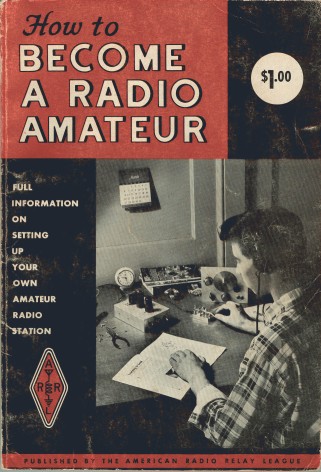
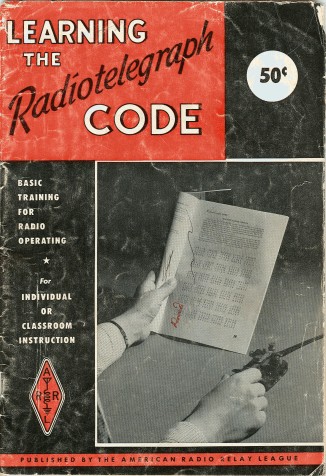
 |
So I studied the various license manuals and old QSTs and whatever else I could find, listening the hiss of Morse on an old wooden box shortwave receiver with "magic eye" tuning, and trying to send with a straight key (no tone oscillator). Finally had the Novice test proxied by a ham in Paris, Arkansas. It took forever to get the results in those days. But the license arrived in January, 1962 when I was 13. |  |
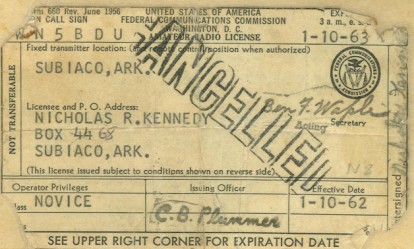 |
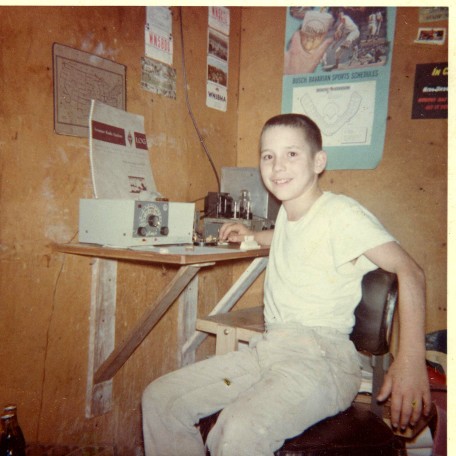 |
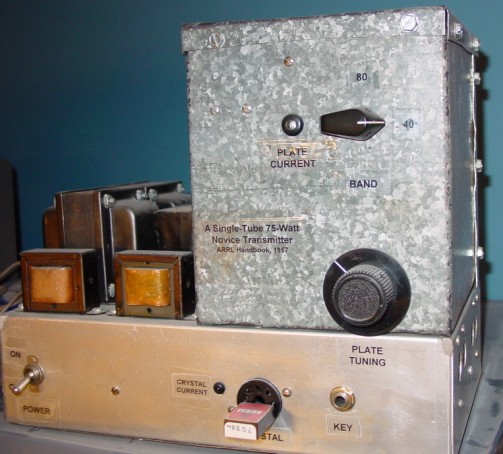 |
My mentor had a tremendous junk box, stored on a landing of the stairs in the church's bell tower. He built my transmitter from the 1957 ARRL handbook. The original was destroyed in a fire, but I constructed this copy decades later. One exception is that I cheated and used silicon rectifiers instead of the three tube rectifiers of the original. I like the distinctive RF cage and high voltage compartment taking up only half the chassis length. My mentor built it from sheet aluminum salvaged from a juke box. I used galvanized steel salvaged from the slide which had been part of my kids' swing set. Note that the tuning indicator is a small lamp. Resonance is indicated by minimum brilliance. |
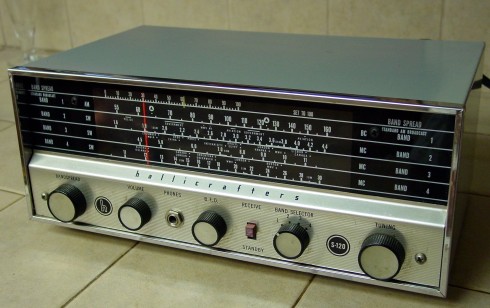 |
The idea was that the big problem with the Sky Buddy II was that it had no "bandspread" control. The entire 40 meter band took maybe 1/4 inch of the dial. So I eventually upgraded to the S-120, another general coverage box but with bandspread tuning. Unfortunately, in the 1960s Hallicrafters was going with sleek styling on the outside but cutting corners on the circuitry inside. This receiver was no S-40 by any stretch. The thing didn't have a "real" BFO, but instead had a circuit that somehow set the suppressor grid of one of the tubes to oscillating. The resulting CW sounded more like gargling than like the tones of Morse. It was an AC/DC (meaning, no transformer) box with a tremendous AC hum on the audio. |
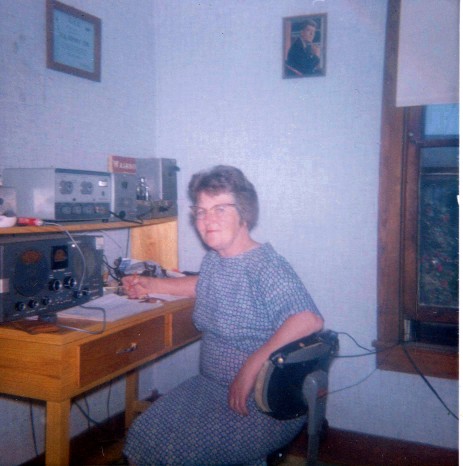 |
Here's a look into the past -- my mom sitting at my
station in the summer of 1964. Mom liked ham radio and used to
sometimes listen to guys on 75 meter AM while I was off at school. Note
that I'd moved into the house by this time. By then I'd dumped the S-120 in favor of another Hallicrafters receiver, the S-20R. This receiver was an antique even then, having been produced from 1939 to 1941. It was a much better receiver than the S-120 but had issues with intermittent connections and would jump frequency when someone walked across the floor. (I wasn't technically adept enough to dig into the box and fix these problems.) But even more importantly, I now had a "real" transmitter in the Hallicrafters and a Heath VFO. Having a VFO gave a former novice the kind of freedom that a car gives a 16-year old. Almost. The old transmitter was now reduced to acting as a power supply for the VF-1 VFO. I got seriously involved with the NTS and Arkansas' OZK traffic net. I liked the discipline and efficient, professional operating style of NTS operators in those days. |
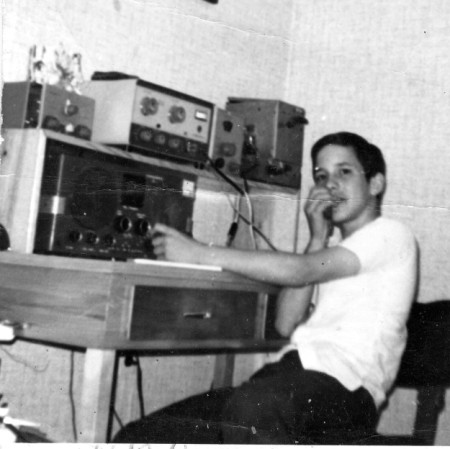 |
Here's another photo apparently from the same time period. I'm pretending to speak into the $2 crystal microphone I got from Burstein-Applebee. Another thing the VFO gave me was the ability to move into the phone bands and work some AM phone. I guess the novelty wore off since I remain a devoted CW man to this day. This was in the day when the phone bands were about 50/50 SSB and AM and wars raged over the two modes. Most importantly, my station had developed to the point where I could make seven QSOs in one day, not one year. It started when I borrowed a DX-40 from my ham buddy in high school, while he waited for his first receiver. I was off and running at once. My entry into real ham radio had been sort of delayed by about a year or two until I put together some equipment that really worked. The antenna may have been a big part of the solution, as I switched from the random wire to dipoles. The Hallicrafters HT-40 transmitter is remembered fondly, in contrast to the mediocre or worse Hallicrafters receivers I used (SX-140 and SX-111 yet to come). The Heath VFO had a tendency to jump, causing me to get OO warnings and eventually dump it in favor of a Knight VFO. Finally, also note the Heath QF-1 Q-Multiplier adding some selectivity to the S-20R. |
 |
Here's the station I had from about my senior year of high school (1966) to when I built the HW-101 after college in 1972. It was just parked in the window and not being used in this 1969 (more or less) photo. I didn't do much hamming in college. The Knight VFO was a nice unit with lots of drive and much better stability than the VF-1. And the SX-111 was certainly the best Hallicrafters receiver I owned. To the right of my receiver is my Japanese Bug. |